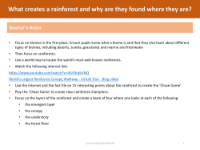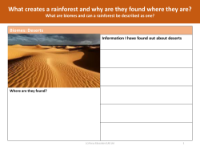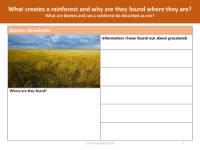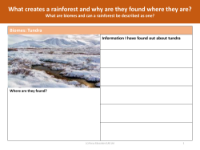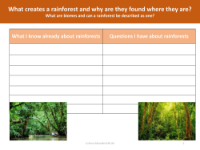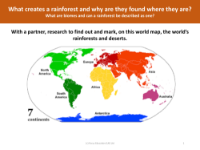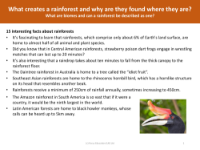Biomes - Info sheet
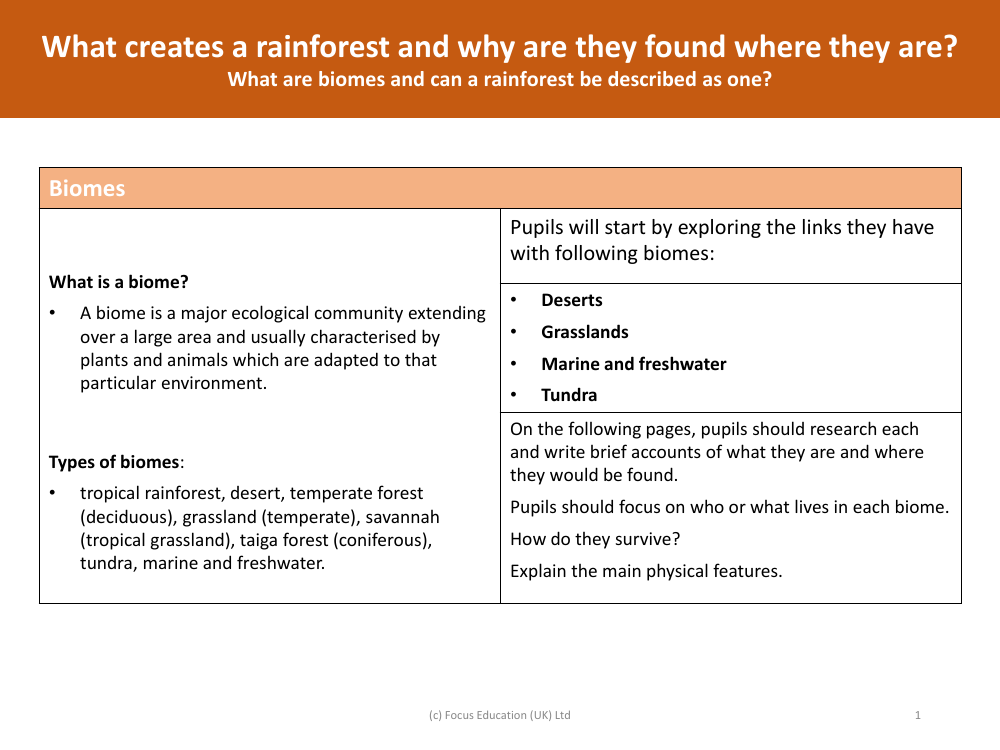
Geography Resource Description
A biome is a vast ecological community defined by the dominant vegetation, climate, and wildlife adapted to that specific environment. Extending over large geographical areas, each biome presents a unique landscape and ecosystem where plants and animals have evolved to thrive under the conditions prevalent there. Biomes are categorised based on their characteristics, such as the climate and types of vegetation present, which in turn influence the diversity of life found within them.
Among the various types of biomes are the tropical rainforest, known for its dense canopy and high rainfall; deserts, which are arid and host specially adapted flora and fauna; temperate forests with deciduous trees; grasslands, which include both temperate and tropical (savannah) varieties; taiga forests, dominated by coniferous trees; tundra regions with their cold, treeless landscapes; and aquatic biomes like marine and freshwater environments. Pupils are encouraged to explore these biomes, focusing particularly on deserts, grasslands, marine and freshwater ecosystems, and the tundra. They are tasked with researching and writing about the physical features of these biomes, the organisms that inhabit them, and the survival strategies these organisms employ. Additionally, pupils will delve into the factors that give rise to rainforests and the reasons behind their specific geographic locations, thus enhancing their understanding of what defines a biome and how rainforests fit into this classification.

